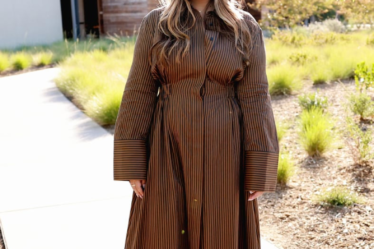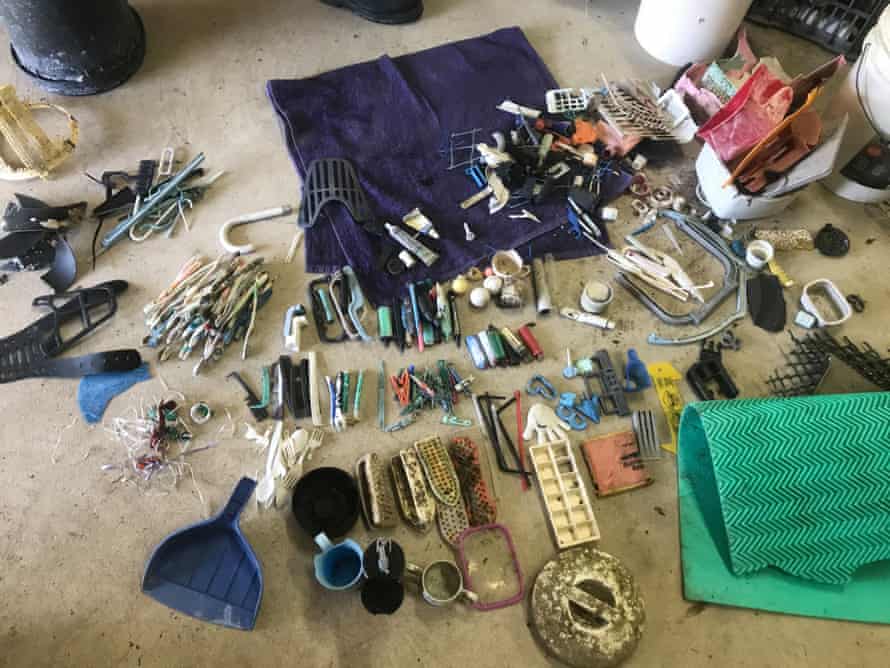
It is with mixed emotions that one visits a turtle rescue centre with no turtles. One’s better self delights in stories of those nursed back from the brink and released in joyous, tearful ceremonies. But, I’ll admit, I really did want a selfie with a sea turtle.
I’m in the Whitsundays, with an eccentric group of volunteers, but we aren’t saving sea turtles. For the first time in more than a year, there aren’t any around to save.
Instead we tick off bucket list items of a less glamorous, more literal nature.
First, we sort through mounds of litter plucked from the beaches of some of the region’s 74 islands. The junk is grouped in buckets with detailed lists pegged on to them. Initially these buckets are categorised according to broad use: bottles; thongs and caps; debris from boats smashed in cyclones; fishing lures, rods and line.
Then the buckets are individually emptied on to a table and the contents are sorted more precisely. Chunks of irrigation pipe are counted separately from plastic whipper snipper blades. Electrical cords and sailing ropes have their own tallies.
Sarah Wilson, a long-term local volunteer, is on the floor sorting small piles: toothbrushes, lighters, clothes pegs, bottle caps, unidentifiable shards of plastic, combs.
“Who even uses combs any more?” she asks.
Each item is listed and counted, just as the volunteers of the Eco Barge Clean Seas project have been doing for the past 13 years.
Later, most of the plastic will be processed and reused, including by a company that makes bodysurfing handplanes.
The meticulous trash cataloguing is done so the project’s founder, Libby Edge, can feed the raw data to organisations who use it to fight littering at its source, and to researchers trying to understand and reduce the impact of plastics in the ocean.
It is a deeply personal quest that Edge, a former commercial skipper who was raised on a yacht, has poured her soul into since 2009. But she has led hundreds of people on the journey with her.
“We’re dealing with a really dark issue,” Edge says. “But when you do it with a band of volunteers, it gives you hope in humanity.”
On this day in May, Edge, Wilson and volunteer coordinator Imogen Grace are joined by a grey nomad and two young women, who are both travelling the country in vans.
The task lends itself to banter. Do you know any free campsites? Where is the best coral? Should an unused condom be placed on the “sporting goods” or “recreational activities” list?
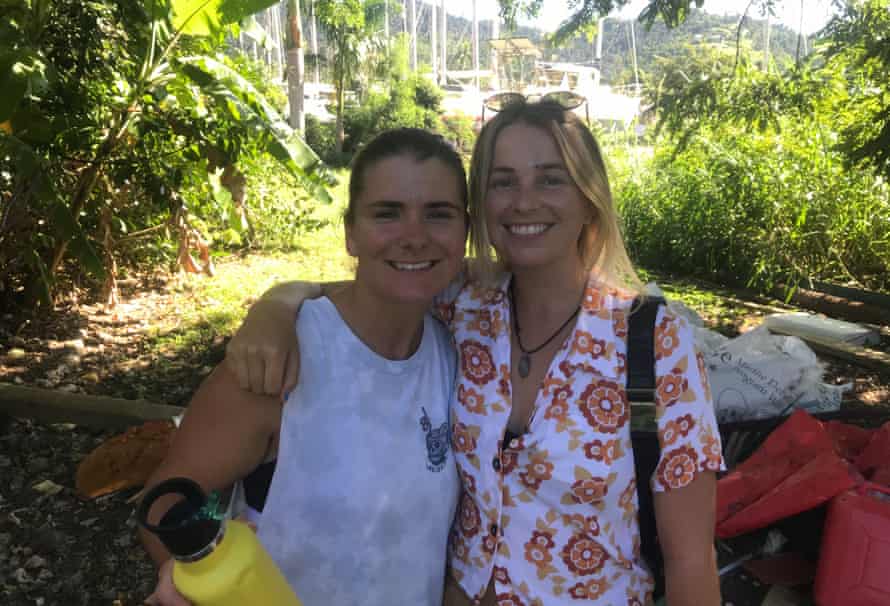
Jess McMillan, a 25-year-old anthropology and philosophy student from Wangaratta, tells us she is nursing suspected broken ribs from a stack on her longboard.
Barb, the grey nomad who wants to go by her first name only, is keen to talk about deep underground military bases (Dumbs) and children supposedly being held by their millions in subterranean tunnels.
Edge gently steers the conversation back “above ground”.
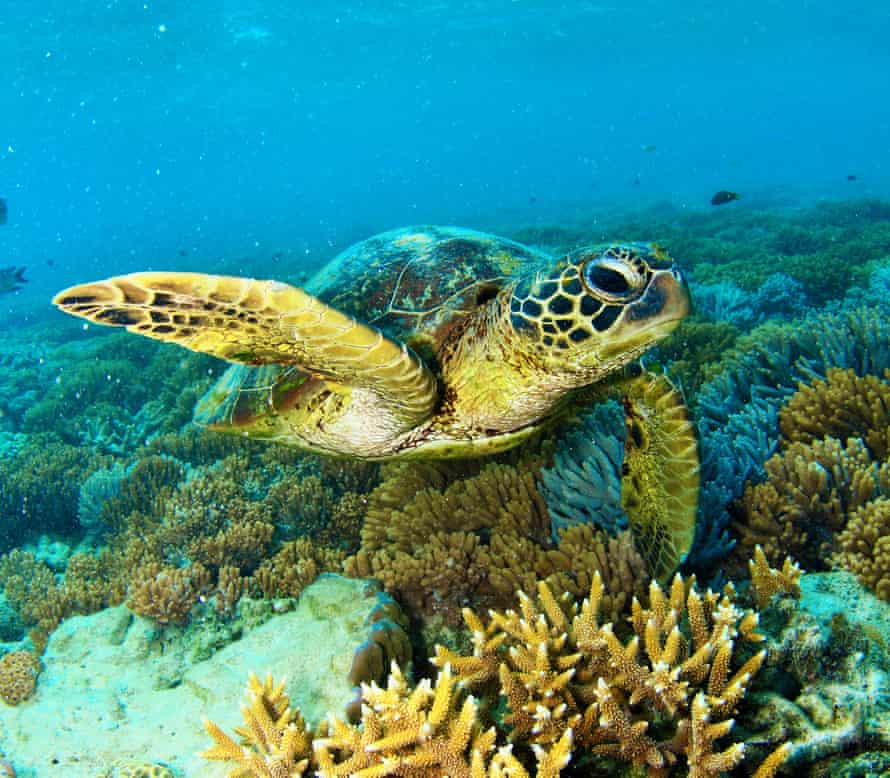
As we sort the bottles – glass from plastic, juice from water containers – I ask Grace the obvious. No, she has never found a message in one.
“Everyone asks that,” Grace says. “Everyone asks: ‘Have you found treasure? The answer is no. It’s all just trash.”
This is not the kind of Whitsundays experience likely to end up on the cover of a brochure.
There are plenty of those experiences to be had in this part of the world, though. The snow-white silica sands of Whitehaven Beach, swirled beneath turquoise waters off Whitsunday Island. Coral gardens that dodged Cyclone Debbie in 2017, or recovered over the past five years. The following day I visit them, our motorised catamaran slicing through calm waters slick with orange coral spawn – a testament to the magnificent resilience of the Great Barrier Reef.
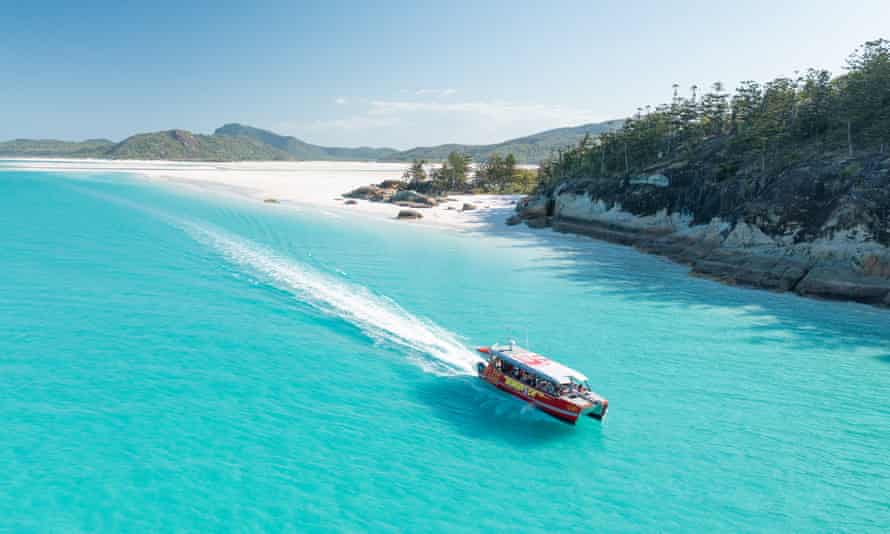
But for how long will the corals retain their vibrant colours in the face of warming oceans? Or more frequent and intense cyclones? Or chemical and sediment runoff from farms and coal mines?
“What if this is the best it’s going to be, ever?” Wilson wonders.
It is one reason why the Cannonvale Beach scuba diver devotes so much of her time, when she is not working at Bunnings, to removing rubbish from the Whitsundays and sorting it.
While she cannot stabilise a heating climate, Wilson can try to do her to keep her backyard tidy, and preserve its status as one of the seven natural wonders of the world.
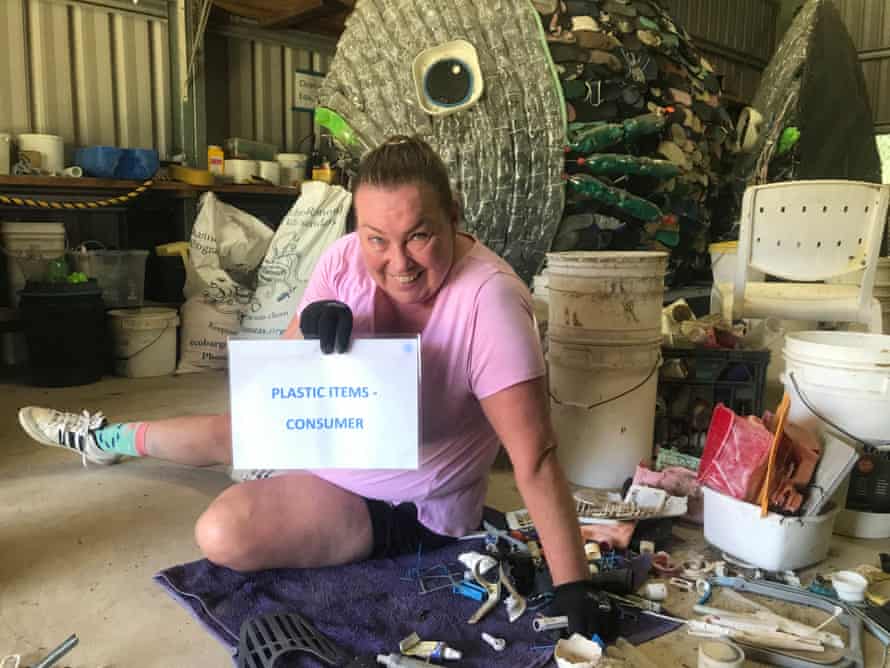
She can help prevent its wildlife – tropical fish, migratory whales, dugongs, birds and, of course, sea turtles – from ingesting and choking on plastic.
After we’ve finished our interview and gone back to sorting litter, Wilson becomes engrossed in her task, lost in thought.
Then she realises another reason why she keeps freely giving her time to help her friend Libby.
“For a while I struggled with uncertainty with life,” she says.
“This has given me a reason to get up in the morning. And it’s free.”
-
You can register your interest to volunteer via the Eco Barge website. Volunteering also includes going out on the barge to collect rubbish and so is weather dependent.
-
The closest airport to the Eco Barge headquarters is Proserpine with several accommodation options in Airlie Beach, nearby Tasman Holiday Parks which has camping (from $50), cabins (from $119), glamping (from $179) – though prices are higher at peak times.
-
The author was a guest of Tourism Whitsundays and was taken to the islands on reefs with Red Cat Adventures.

